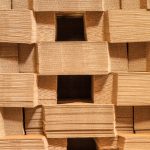Just started a business and need packaging for your product? Looking to brush up on your knowledge about packaging? We’re here to help. As a corrugated packaging manufacturer, we’ve been around the block a few times, and we’ve heard a number of questions about packaging. Here’s an overview of everything you need to know about corrugated boxes and which type is right for you.
First, let’s start high level. While you might think of your packaging as just a cardboard box, cardboard and corrugated board are not the same thing. Cardboard is heavy-duty paper stock, and it’s actually not used for strong shipping containers. A good example of a cardboard box is a cereal box. Corrugated board, on the other hand, is a much stronger board that has two main components: the liner and the medium. The liner is the flat material typically found on the outside surfaces of the board (but can also be found on the inside of some heavier board combinations), and the medium, which can be found between the liners. The medium creates the arched shape or “flutes” between the liners and is a large contributor in the strength of the board. Once these sheets of paper are glued together they create a corrugated board which is then converted into a structure that can sustain long shipping journeys, bumps, and falls. (A lot of things your cereal box would not survive.) When you go to order your packaging it’s important to know the difference, because chances are you don’t want to ship your products in a cardboard box.



